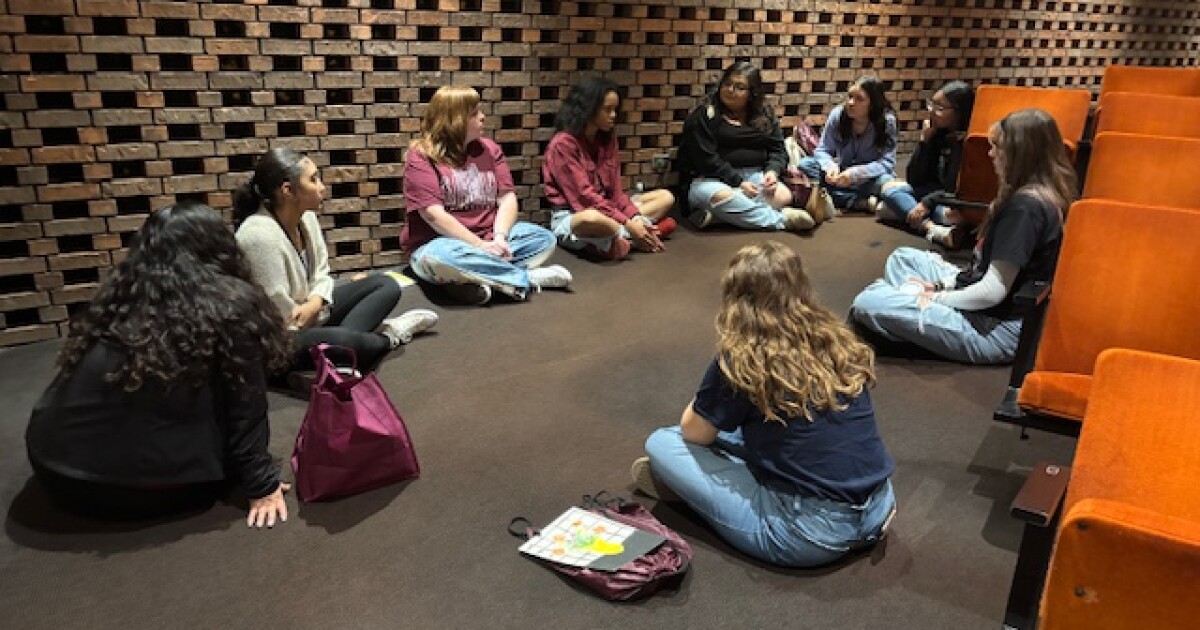Report on UK Government Higher Education Reforms and Alignment with Sustainable Development Goals
Enhancing Educational Quality and Equity (SDG 4)
The UK government has outlined measures to reform the higher education sector, with a significant focus on improving educational standards, directly supporting the objectives of Sustainable Development Goal 4 (Quality Education). The primary initiative involves strengthening the Office for Students (OfS) to ensure all learners have access to high-quality tertiary education.
- Strengthening Regulatory Oversight: The OfS will be granted increased capacity and power to identify and intervene in cases of low-quality teaching provision.
- Maintaining Quality Standards: To prevent a decline in quality associated with rapid expansion, the government will legislate to allow the OfS to impose recruitment limits on institutions where growth poses a risk to educational standards.
- Ensuring Provider Accountability: Large franchise providers will be required to register with the OfS or face defunding, a measure aimed at standardizing quality across all forms of provision and ensuring equitable learning outcomes.
Promoting Lifelong Learning and Economic Growth (SDG 4 & SDG 8)
A central component of the reform is the introduction of the Lifelong Learning Entitlement (LLE), which is designed to create a more flexible and accessible higher education system. This initiative aligns with SDG 4.3 (equal access to affordable and quality tertiary education) and SDG 8 (Decent Work and Economic Growth) by equipping citizens with relevant skills for employment.
- Flexible Learning Pathways: The LLE will enable learners to move between different universities, colleges, and training providers, accumulating qualifications over time.
- Modular Education Structure: A consultation will explore introducing “break points” within degrees, allowing students to gain recognized qualifications at various stages of their education.
- Focus on Technical Skills: The government will facilitate the provision of stand-alone, occupationally focused higher technical courses (levels 4 and 5), directly addressing the need for skills relevant to sustainable economic growth.
- Equitable Funding Rules: The LLE will remove funding discrepancies between full-time and part-time study, promoting inclusive learning opportunities for all.
Fostering Specialization and Innovation (SDG 9)
The government is actively encouraging a shift away from a homogenous higher education landscape towards a system where providers specialize in their areas of strength. This strategy supports SDG 9 (Industry, Innovation, and Infrastructure) by cultivating focused expertise that can drive economic productivity and innovation.
- Addressing System Homogeneity: The reform calls for an end to the “one size fits all” approach, urging institutions to define their core purpose and unique strengths.
- Encouraging Specialization: Providers will be encouraged to specialize and collaborate, ensuring their offerings are aligned with the needs of students and the economy, thereby fostering innovation and sustainable industrialization.
Reforming Research Funding for Strategic Collaboration (SDG 9 & SDG 17)
To support the drive for specialization, research funding will be reformed to incentivize collaboration and strategic alignment with national priorities. This approach enhances the sector’s contribution to SDG 9.5 (enhance scientific research) and SDG 17 (Partnerships for the Goals).
- Strategic Distribution of Funding: A more strategic allocation of research funding will empower institutions to build deep expertise in specific areas where they can become leaders.
- Alignment with National Priorities: The goal is to achieve a more focused volume of research that demonstrates higher quality, better cost recovery, and stronger alignment with national objectives.
- Promoting Partnerships: The government will explore options for universities to jointly share research grants, facilities, and equipment, fostering the collaborative partnerships essential for achieving the Sustainable Development Goals.
Analysis of SDGs, Targets, and Indicators
1. Which SDGs are addressed or connected to the issues highlighted in the article?
-
SDG 4: Quality Education
The article extensively discusses measures to improve the quality of higher education, ensure flexible learning pathways, and promote lifelong learning opportunities. This aligns directly with the core mission of SDG 4 to ensure inclusive and equitable quality education for all.
-
SDG 9: Industry, Innovation, and Infrastructure
The focus on reforming research funding to incentivize specialization, align with national priorities, and encourage collaboration and the sharing of facilities connects to SDG 9. This goal aims to foster innovation and enhance scientific research, which are key themes in the article’s discussion of research reform.
2. What specific targets under those SDGs can be identified based on the article’s content?
-
Under SDG 4: Quality Education
-
Target 4.3: By 2030, ensure equal access for all women and men to affordable and quality technical, vocational and tertiary education, including university.
The article addresses this target by focusing on improving the quality of university provision. The government’s plan to empower the Office for Students (OfS) to “swiftly identify low-quality teaching provision, and intervene to tackle it” is a direct effort to ensure the quality of tertiary education.
-
Target 4.4: By 2030, substantially increase the number of youth and adults who have relevant skills, including technical and vocational skills, for employment, decent jobs and entrepreneurship.
This target is supported by the introduction of the Lifelong Learning Entitlement (LLE) and the plan to make it easier to offer “stand-alone occupationally focused higher technical (level 4 and 5) courses.” This initiative is designed to provide learners with skills that are directly relevant to the economy and employment.
-
Target 4.3: By 2030, ensure equal access for all women and men to affordable and quality technical, vocational and tertiary education, including university.
-
Under SDG 9: Industry, Innovation, and Infrastructure
-
Target 9.5: Enhance scientific research, upgrade the technological capabilities of industrial sectors in all countries… encouraging innovation and substantially increasing the number of research and development workers… and public and private research and development spending.
The article’s section on “Research funding reform” directly relates to this target. The plan for a “more strategic distribution of research activity” and ensuring “stronger alignment to short- and long-term national priorities” is a clear strategy to enhance and direct scientific research to foster innovation and meet national needs.
-
Target 9.5: Enhance scientific research, upgrade the technological capabilities of industrial sectors in all countries… encouraging innovation and substantially increasing the number of research and development workers… and public and private research and development spending.
3. Are there any indicators mentioned or implied in the article that can be used to measure progress towards the identified targets?
-
For Target 4.3 (Quality Tertiary Education):
- Number of quality investigations: The article implies this as a metric by stating the government will “increase capacity in the OfS to conduct quality investigations.”
- Number of institutions with recruitment limits: Progress can be measured by tracking the instances where the OfS is “able to impose recruitment limits where growth ‘risks poor quality’.”
-
For Target 4.4 (Relevant Skills for Employment):
- Uptake of the Lifelong Learning Entitlement (LLE): The success of the LLE can be measured by the number of learners using it to “move between universities, colleges and training providers, and building up qualifications over time.”
- Availability of flexible and technical courses: Progress can be tracked by the number of new “‘break points’ within degrees” and the number of “stand-alone occupationally focused higher technical” courses offered by providers.
-
For Target 9.5 (Enhance Scientific Research):
- Distribution of research funding: The effectiveness of the reform can be measured by analyzing the “strategic distribution of research activity across the sector.”
- Number of collaborative research initiatives: The article suggests tracking progress by exploring “options for universities to jointly share research grants, as well as facilities and equipment.”
- Alignment of research with national priorities: A qualitative indicator would be the degree to which research demonstrates “stronger alignment to short- and long-term national priorities.”
4. Summary Table of SDGs, Targets, and Indicators
| SDGs | Targets | Indicators |
|---|---|---|
| SDG 4: Quality Education | 4.3: Ensure equal access to affordable and quality tertiary education. |
|
| 4.4: Increase the number of adults with relevant skills for employment. |
|
|
| SDG 9: Industry, Innovation, and Infrastructure | 9.5: Enhance scientific research and encourage innovation. |
|
Source: timeshighereducation.com






